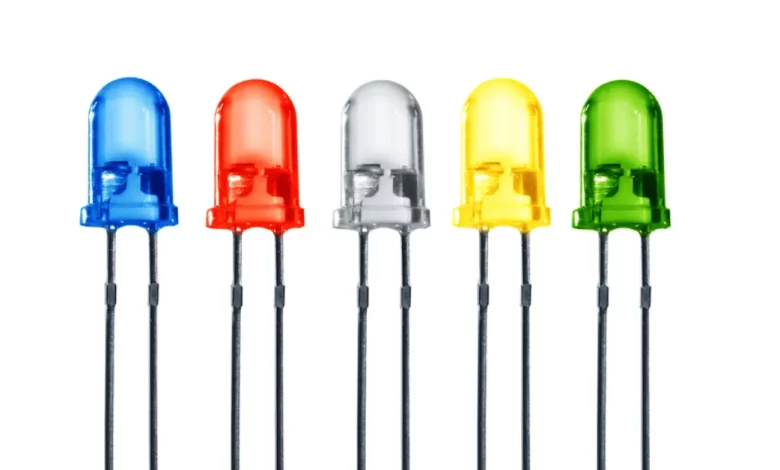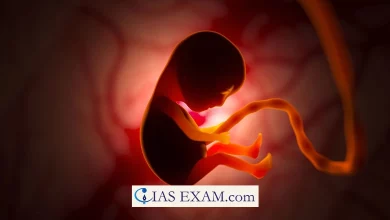
Context: LEDs have become the preferred light source in the world, replacing incandescent bulbs and fluorescent lamps from previous years.
Diodes:
- A diode is a small electronic component that only allows current to flow in one direction.
- It works by using a p-n junction, where positive and negative charge carriers meet.
- This junction allows electrons to move from the negative side to the positive side, creating a one-way current flow.
- The anode is connected to the positive side, while the cathode is connected to the negative side.
- When a suitable voltage is applied, more electrons flow from the negative side to the positive side, allowing current to move in the desired direction.
- However, if the voltage is reversed, the current will not flow in the opposite direction.
Light-Emitting Diode:
- It is a diode that emits light using electroluminescence, which is known as its specialness.
- When electrons and holes in the diode combine, they emit energy as light.
- The particular colour of the light is dependent on energy frequency whereby band gap controls it within visible frequencies.
Band Gap:
- A band gap is the energy required for electrons to jump between levels in a material.
- Conductors help in easy conduction of electrons while nonconductors do not have enough energy for the passage.
- The band gap reveals the energy level that a current carrying electron has to overcome.
- In the case of LEDs, the energy released when electrons and holes combine is equal to the band gap.
- Engineers use specific materials to tailor the band gap of a p-n junction in an LED, resulting in only visible light being emitted when electricity is applied.
Uses of LED:
- LEDs are used in many different types of industry, such as consumer electronics industries and lights.
- They can have a variety of colours and other frequencies, as well as incorporated into the skin.
- The current studies aim at producing better LED’s by utilisation of materials such as perovskites.
What different colours can an LED emit?
- LEDs have the capability of producing a variety of shades due to their being able to blend red, green and blue.
- On the other hand blue LEDs were not easy to achieve for scientists because of challenges in crystal formation.
- In the late 1980s, a breakthrough in layer-by-layer material fabrication process brought bright blue LEDs into being.
- This breakthrough won the three Japanese researchers the Nobel Prize in Physics 2014.
Benefits of LED lights:
- LEDs have a number of advantages, such as lower prices and greater light power for the certain frequency of luminous flux according to Haitz’s law.
- Before the creation of this law, LEDs were considered efficient in relation to incandescent bulbs and fluorescent lamps.
- Moreover, their lifetime is long, light of the proper colour and runs on energy saving contribute to a reduction in cost by itself as well as reduces material wastage.
Source: TH





.png)



